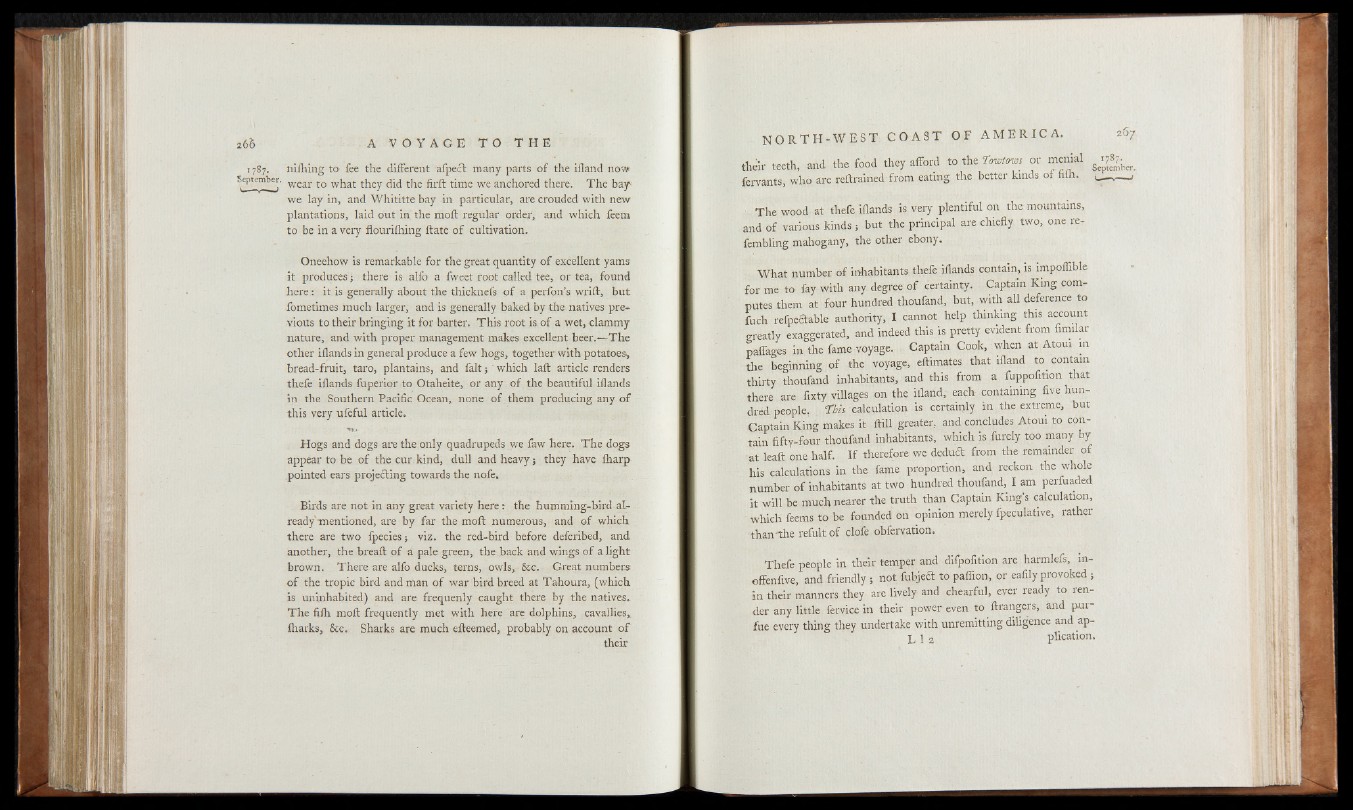
1787. milling to fee the different afpect many parts of the ifland now
September. wear t0 w]lat: they did the firft time we anchored there. The bay
we lay in, and Whititte bay in particular, are crouded with new
plantations, laid out in the moft regular order, and which feem
to be in a very flourifhing ft ate of cultivation.
Oneehow is remarkable for the great quantity of excellent yams
it produces; there is alfo a fweet root called tee, or tea, found
here: it is generally about the thicknefs of a perfon’s wrift, but
fometimes much larger, and is generally baked by the natives previous
to their bringing it for barter. This root is of a wet, clammy
nature, and with proper management makes excellent beer.— The
other iflands in general produce a few hogs, together with potatoes,
bread-fruit, taro, plantains, and fait ; ' which laft article renders
thefe iflands fuperior to Otaheite, or any of the beautiful iflands
in the Southern Pacific Ocean, none of them producing any of
this very ufeful article.
Hogs and dogs are the only quadrupeds we faw here. The dogs
appear to be of the cur kind, dull and heavy; they have fharp
pointed ears projecting towards the nofe.
Birds are not in any great variety here: the humming-bird already
"mentioned, are by far the moft numerous, and of which
there are two fpecies; viz. the red-bird before defcribed, and
another, the breaft of a pale green, the back and wings of a light
brown. There are alfo ducks, terns, owls, &c. Great numbers
of the tropic bird and man of war bird breed at Tahoura, (which
is uninhabited) and are frequenly caught there by the natives.
The fifh moft frequently met with here are dolphins, cavallies,,
fharks, &c. Sharks are much efteemed, probably on account of
their
their teeth, and the food they afford to the To-wtrws or menial
fervants, who are reftrained from eating the better kinds of nih. — j
The wood at thefe iflands is very plentiful on the mountains,
and of various kinds ; but the principal are chiefly two, one re-
fembling mahogany, the other ebony.
What number of inhabitants thefe iflands contain, is impolfible
for me to fay with any-degree of certainty. Captain King computes
them at four hundred thoufand, but, with all deference to
fuch refpeftable authority, I cannot help thinking this account
greatly exaggerated, and indeed this is pretty evident from fimilar
paffages in the fame voyage. Captain Cook, when at Atoui in
the beginning of the voyage, eftimates that ifland to contain
thirty thoufand inhabitants, and this from a fuppofition that
there are fixty villages on the ifland, each- containing five hundred
people. This calculation is certainly in the extreme, but
Captain King makes it ftill greater, and concludes Atoui to contain
fifty-four thoufand inhabitants, which is finely too many by
at leaft one half. If therefore we deduct from the remainder of
his calculations in the fame proportion, and reckon the whole
number of inhabitants at two hundred thoufand, I am perfuaded
it will be much nearer the truth than Captain King’s calculation,
which feems to be founded on opinion merely fpeculative, rather
than "the refult of clofe obfervation.
Thefe people in their temper and difpofition are harmlefs, in-
offenfive, and friendly ; not fubjeft to paflion, or eafily provoked ;
in their manners they are lively and chearful, ever ready to render
any little fervice in their power even to ftrangers, and pur-
fue every thing they undertake with unremitting diligence and ap-
L 1 2 plication.